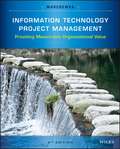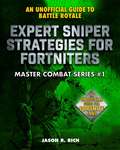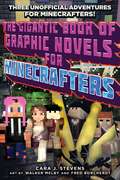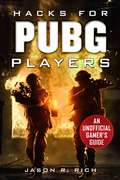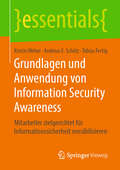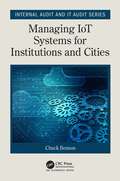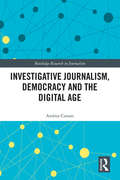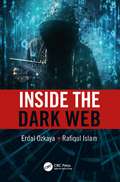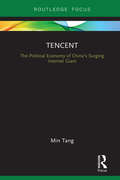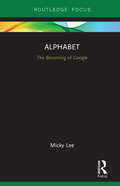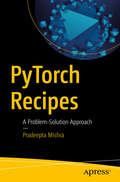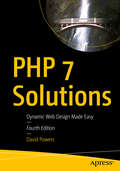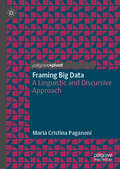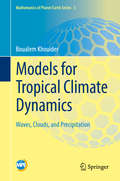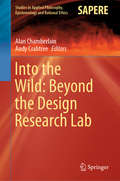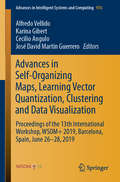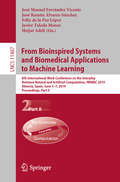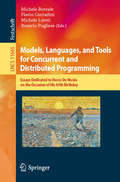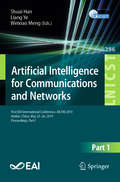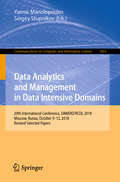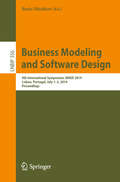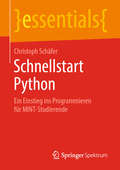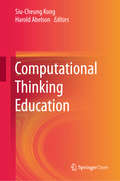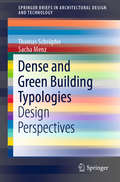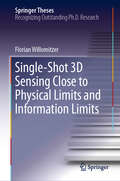- Table View
- List View
Information Technology Project Management: Providing Measurable Organizational Value
by Jack MarchewkaThe 5th Edition of Jack Marchewka's Information Technology Project Management focuses on how to create measurable organizational value (MOV) through IT projects. The author uses the concept of MOV, combined with his own research, to create a solid foundation for making decisions throughout the project's lifecycle. <p><p> The book's integration of project management and IT concepts provides students with the tools and techniques they need to develop in this field.
Expert Sniper Strategies for Fortniters: An Unofficial Guide to Battle Royale (Master Combat)
by Jason RichHit your target every time with this Fortnite expert sniper guide. This all‑new, unofficial, illustrated guide series will turn you into a master Fortnite: Battle Royale gamer by uncovering all the best strategies and secrets of this wildly popular game. Whether you play Fortnite Battle Royale on a PC, Mac, Xbox One, PlayStation 4, or your mobile device, you’ll find everything you need to stay at the top of your game. Each book is packed with useful insider tips on topics like, staying alive longer, exploring, collecting a powerful arsenal, building, and snagging more victories during each match. When it comes to achieving #1 Victory Royale, the Fortnite Battle Royale: Master Combat Series provides the ultimate competitive edge. Thanks to this comprehensive how‑to Fortnite shooting guide, you’ll gain the crucial battle skills you need to eliminate your enemies like a pro. Sniper rifles and projectile weapons are only as good as the player using them. This comprehensive resource will sharpen your skills and show you how and when to use the incredible range of guns, weapons, tools, and ammunition available during each match. There’s nothing more important in Fortnite than staying alive longer and battling your way to #1 Victory Royale. This straightforward guide has everything you need to prepare for long‑range, mid‑range, and close‑range combat situations so that you can emerge a winner.
The Gigantic Book of Graphic Novels for Minecrafters: Three Unofficial Adventures
by Cara StevensPackaged Together for the First Time, the First Three Installments of Sky Pony’s Redstone Junior High Series! When quiet farm girl Pixel receives an acceptance letter from the prestigious academy for gifted students, Redstone Junior High, she is thrilled! Little does Pixel know that the school's long history of safety is about to take an unsettling turn. The adventures that unfold will test Pixel's courage, reveal a unique and precious gift that she never knew she had, and help her create friendships that will change the course of her life. This bind up contains the following graphic novels: Zombies Ate My HomeworkCreepers Crashed My PartyDragons Never DieThe Gigantic Book of Graphic Novels for Minecrafters will enchant readers of all ages who love playing Minecraft and love stories full of action, adventure, and bravery. <P><P> <i>Advisory: Bookshare has learned that this book offers only partial accessibility. We have kept it in the collection because it is useful for some of our members. Benetech is actively working on projects to improve accessibility issues such as these.</i>
Hacks for PUBG Players: An Unofficial Gamer's Guide
by Jason RichBefore there was Fortnite: Battle Royale, PUBG was the multiplayer combat game that took the world by storm with its fast action, photorealistic graphics, and intense combat scenarios that pitted each gamer against up to 99 others in a real-time battle royale. Only one soldier can win each high intensity match. Survival depends on a gamer’s speed, shooting accuracy, combat strategy, and ability to safely get around the island where each match takes place. During each match, gamers are forced to battle against up to 99 other players, who are often unpredictable in terms of their actions and fighting techniques. This requires gamers to constantly tweak their strategies as new combat situations arise and different challenges present themselves around every turn. To help gamers develop their PUBG gaming skills and specialized fighting techniques, PUBG Hacks introduces new gamers to Playerunknown’s Battlegrounds, provides detailed directions on how to play like a pro on all compatible gaming platforms, and offers fighting, exploration, and survival strategies that can help lead a reader to victory! Using hundreds of full-color screenshots and easy-to-understand directions, PUBG Hacksis a “must read” for newbies as well as more experienced PUBG players looking to enhance their skills. This unofficial guide covers: How to get started playing PUBG on any gaming platform.Ways to customize a soldier with in-game purchases and items that get unlocked during gameplay by completing objectives.How to use popular types of weapons offered within the game.Proven combat strategies and survival tactics.Ways to safely navigate around the island on foot and using vehicles.How to use the island’s terrain to a soldier’s advantage.Strategies for successfully launching surprise attacks and ambushes.Techniques for outsmarting adversaries and surviving incoming attacks.Creative ways to use weapons, ammo, and tools to a player’s advantage.
Grundlagen und Anwendung von Information Security Awareness: Mitarbeiter zielgerichtet für Informationssicherheit sensibilisieren (essentials)
by Kristin Weber Andreas E. Schütz Tobias FertigKristin Weber, Andreas E. Schütz und Tobias Fertig zeigen in diesem essential, wie Mitarbeiter in acht Schritten für das Thema Informationssicherheit sensibilisiert werden können. Vorgestellt wird ein Vorgehen, welches Erkenntnisse aus der Verhaltenspsychologie berücksichtigt und somit eine passgenaue Auswahl von Sensibilisierungsmaßnahmen erlaubt. Projektbeispiele illustrieren die Umsetzbarkeit des Modells. Damit beschreiben die Autoren eine konkret anwendbare Methode, die auch bei kleinem Budget eine erfolgreiche Mitarbeitersensibilisierung verspricht.
Managing IoT Systems for Institutions and Cities (Internal Audit and IT Audit)
by Chuck BensonThis book defines what IoT Systems manageability looks like and what the associated resources and costs are of that manageability. It identifies IoT Systems performance expectations and addresses the difficult challenges of determining actual costs of IoT Systems implementation, operation, and management across multiple institutional organizations. It details the unique challenges that cities and institutions have in implementing and operating IoT Systems.
Investigative Journalism, Democracy and the Digital Age (Routledge Research in Journalism)
by Andrea CarsonTheoretically grounded and using quantitative data spanning more than 50 years together with qualitative research, this book examines investigative journalism’s role in liberal democracies in the past and in the digital age. In its ideal form, investigative reporting provides a check on power in society and therefore can strengthen democratic accountability. The capacity is important to address now because the political and economic environment for journalism has changed substantially in recent decades. In particular, the commercialization of the Internet has disrupted the business model of traditional media outlets and the ways news content is gathered and disseminated. Despite these disruptions, this book’s central aim is to demonstrate using empirical research that investigative journalism is not in fact in decline in developed economies, as is often feared.
Inside the Dark Web
by Rafiqul Islam Erdal OzkayaInside the Dark Web provides a broad overview of emerging digital threats and computer crimes, with an emphasis on cyberstalking, hacktivism, fraud and identity theft, and attacks on critical infrastructure. The book also analyzes the online underground economy and digital currencies and cybercrime on the dark web. The book further explores how dark web crimes are conducted on the surface web in new mediums, such as the Internet of Things (IoT) and peer-to-peer file sharing systems as well as dark web forensics and mitigating techniques. This book starts with the fundamentals of the dark web along with explaining its threat landscape. The book then introduces the Tor browser, which is used to access the dark web ecosystem. The book continues to take a deep dive into cybersecurity criminal activities in the dark net and analyzes the malpractices used to secure your system. Furthermore, the book digs deeper into the forensics of dark web, web content analysis, threat intelligence, IoT, crypto market, and cryptocurrencies. This book is a comprehensive guide for those who want to understand the dark web quickly. After reading Inside the Dark Web, you’ll understand The core concepts of the dark web. The different theoretical and cross-disciplinary approaches of the dark web and its evolution in the context of emerging crime threats. The forms of cybercriminal activity through the dark web and the technological and "social engineering" methods used to undertake such crimes. The behavior and role of offenders and victims in the dark web and analyze and assess the impact of cybercrime and the effectiveness of their mitigating techniques on the various domains. How to mitigate cyberattacks happening through the dark web. The dark web ecosystem with cutting edge areas like IoT, forensics, and threat intelligence and so on. The dark web-related research and applications and up-to-date on the latest technologies and research findings in this area. For all present and aspiring cybersecurity professionals who want to upgrade their skills by understanding the concepts of the dark web, Inside the Dark Web is their one-stop guide to understanding the dark web and building a cybersecurity plan.
Tencent: The Political Economy of China’s Surging Internet Giant (Global Media Giants)
by Min TangIn this book, author Min Tang examines the political economy of the China-based leading global Internet giant, Tencent. Tracing the historical context and shaping forces, the book illuminates Tencent’s emergence as a joint creation of the Chinese state and transnational financial capital. Tencent reveals interweaving axes of power on different levels, particularly interactions between the global digital industry and contemporary China. The expansion strategies Tencent has employed—horizontal and vertical integration, diversification and transnationalization—speak to the intrinsic trends of capitalist reproduction and the consistent features of the political economy of communications. The book also pinpoints two emerging and entangling trends— transnationalization and financialization—as unfolding trajectories of the global political economy. Understanding Tencent’s dynamics of growth helps to clarify the complex nature of China’s contemporary transformation and the multifaceted characteristics of its increasingly globalized Internet industry. This short and highly topical research volume is perfect for students and scholars of of global media, political economy, and Chinese business, media and communication, and society.
Alphabet: The Becoming of Google (Global Media Giants)
by Micky LeeGoogle is synonymous with searching, but in this innovative new research volume, Micky Lee explores how the Alphabet Corporation, now the parent company of Google, is more than just a search engine. Using a political economic approach, Lee draws on the concept of networks to investigate the growth of this key media player. The establishment of the parent company, Alphabet, shows the company is expanding to other industries from equity investment to self-driving cars. This book first examines this history of expansion, before delving into the economic, political, and cultural profiles of the corporation. Lee ultimately finds that what makes Google powerful is not one genius idea, but rather networks of people, places, and capital. Alphabet: The Becoming of Google is a compelling dive into the sometimes inscrutable world of Google, ideal for students, scholars, and researchers interested in the fields of digital media studies, the politics and economies of online media, and the history of the internet.
PyTorch Recipes: A Problem-Solution Approach
by Pradeepta MishraGet up to speed with the deep learning concepts of Pytorch using a problem-solution approach. Starting with an introduction to PyTorch, you'll get familiarized with tensors, a type of data structure used to calculate arithmetic operations and also learn how they operate. You will then take a look at probability distributions using PyTorch and get acquainted with its concepts. Further you will dive into transformations and graph computations with PyTorch. Along the way you will take a look at common issues faced with neural network implementation and tensor differentiation, and get the best solutions for them. Moving on to algorithms; you will learn how PyTorch works with supervised and unsupervised algorithms. You will see how convolutional neural networks, deep neural networks, and recurrent neural networks work using PyTorch. In conclusion you will get acquainted with natural language processing and text processing using PyTorch.What You Will LearnMaster tensor operations for dynamic graph-based calculations using PyTorchCreate PyTorch transformations and graph computations for neural networksCarry out supervised and unsupervised learning using PyTorch Work with deep learning algorithms such as CNN and RNNBuild LSTM models in PyTorch Use PyTorch for text processing Who This Book Is ForReaders wanting to dive straight into programming PyTorch.
PHP 7 Solutions: Dynamic Web Design Made Easy
by David PowersMake your websites more dynamic by adding a feedback form, creating a private area where members can upload images that are automatically resized, or perhaps storing all your content in a database. David Powers has updated his definitive book to incorporate the latest techniques and changes to PHP, including the arrival of PHP 7. New features include the spaceship and null coalesce operators, generators, using array shorthand syntax for list(), array dereferencing, and array unpacking with the splat operator.The problem is, you're not a programmer and the thought of writing code sends a chill up your spine. Or maybe you've dabbled a bit in PHP and MySQL, but you can't get past baby steps. If this describes you, then you've just found the right book. PHP and the MySQL database are deservedly the most popular combination for creating dynamic websites. They're free, easy to use, and provided by many web hosting companies in their standard packages. This book also covers MariaDB, a seamless replacement for MySQL that has been adopted on many web servers.Unfortunately, most PHP books either expect you to be an expert already or force you to go through endless exercises of little practical value. In contrast, this book gives you real value right away through a series of practical examples that you can incorporate directly into your sites, optimizing performance and adding functionality such as file uploading, email feedback forms, image galleries, content management systems, and much more. Each solution is created with not only functionality in mind, but also visual design.But this book doesn't just provide a collection of ready-made scripts: each PHP solution builds on what's gone before, teaching you the basics of PHP and database design quickly and painlessly. By the end of the book, you'll have the confidence to start writing your own scripts or—if you prefer to leave that task to others—to adapt existing scripts to your own requirements. Right from the start, you're shown how easy it is to protect your sites by adopting secure coding practices.What You Will LearnDesign and build dynamic PHP-based web sites and applications Get started right away through practical examples that you can reuseIncorporate PHP 7 elements including new ways of handling arrays Work with the latest PHP 7 techniques, innovations, and best practicesWho This Book Is ForReaders should have at least some prior exposure to web development using PHP.
Framing Big Data: A Linguistic and Discursive Approach
by Maria Cristina PaganoniThis book addresses big data as a socio-technical construct with huge potential for innovation in key sectors such as healthcare, government and business. Big data and its increasingly widespread use in such influential spheres can generate ethically controversial decisions, including questions surrounding privacy, consent and accountability. This book attempts to unpack the epistemological implications of the term ‘big data’, as well as the opportunities and responsibilities which come with it. The author analyses the linguistic texture of the big data narrative in the news media, in healthcare and in EU law on data protection, in order to contribute to its understanding from the critical perspective of language studies. The result is a study which will be of interest to students and scholars working in the digital humanities, corpus linguistics, and discourse studies.
Models for Tropical Climate Dynamics: Waves, Clouds, and Precipitation (Mathematics of Planet Earth #3)
by Boualem KhouiderThis book is a survey of the research work done by the author over the last 15 years, in collaboration with various eminent mathematicians and climate scientists on the subject of tropical convection and convectively coupled waves. In the areas of climate modelling and climate change science, tropical dynamics and tropical rainfall are among the biggest uncertainties of future projections. This not only puts at risk billions of human beings who populate the tropical continents but it is also of central importance for climate predictions on the global scale. This book aims to introduce the non-expert readers in mathematics and theoretical physics to this fascinating topic in order to attract interest into this difficult and exciting research area. The general thyme revolves around the use of new deterministic and stochastic multi-cloud models for tropical convection and convectively coupled waves. It draws modelling ideas from various areas of mathematics and physics and used in conjunction with state-of-the-art satellite and in-situ observations and detailed numerical simulations. After a review of preliminary material on tropical dynamics and moist thermodynamics, including recent discoveries based on satellite observations as well as Markov chains, the book immerses the reader into the area of models for convection and tropical waves. It begins with basic concepts of linear stability analysis and ends with the use of these models to improve the state-of-the-art global climate models. The book also contains a fair amount of exercises that makes it suitable as a textbook complement on the subject.
Into the Wild: Beyond the Design Research Lab (Studies in Applied Philosophy, Epistemology and Rational Ethics #48)
by Andy Crabtree Alan ChamberlainThis edited collection opens up new intellectual territories and articulates the ways in which academics are theorising and practicing new forms of research in ‘wild’ contexts. Many researchers are choosing to leave the familiarity of their laboratory-based settings in order to pursue in-situ studies ‘in the wild’ that can help them to better understand the implications of their work in real-world settings. This has naturally led to ethical, philosophical and practical reappraisals with regard to the taken for granted lab-based modus operandi of scientific, cultural and design-based ways of working. This evolving movement has led to a series of critical debates opening up around the nature of research in the wild, but up until now these debates have not been drawn together in a coherent way that could be useful in an academic context. The book brings together applied, methodological and theoretical perspectives relating to this subject area, and provides a platform and a source of reference material for researchers, students and academics to base their work on. Cutting across multiple disciplines relating to philosophy, sociology, ethnography, design, human–computer interaction, science, history and critical theory, this timely collection appeals to a broad range of academics in varying fields of research.
Advances in Self-Organizing Maps, Learning Vector Quantization, Clustering and Data Visualization: Proceedings of the 13th International Workshop, WSOM+ 2019, Barcelona, Spain, June 26-28, 2019 (Advances in Intelligent Systems and Computing #976)
by Alfredo Vellido Karina Gibert Cecilio Angulo José David Martín GuerreroThis book gathers papers presented at the 13th International Workshop on Self-Organizing Maps, Learning Vector Quantization, Clustering and Data Visualization (WSOM+), which was held in Barcelona, Spain, from the 26th to the 28th of June 2019. Since being founded in 1997, the conference has showcased the state of the art in unsupervised machine learning methods related to the successful and widely used self-organizing map (SOM) method, and extending its scope to clustering and data visualization. In this installment of the AISC series, the reader will find theoretical research on SOM, LVQ and related methods, as well as numerous applications to problems in fields ranging from business and engineering to the life sciences. Given the scope of its coverage, the book will be of interest to machine learning researchers and practitioners in general and, more specifically, to those looking for the latest developments in unsupervised learning and data visualization.
From Bioinspired Systems and Biomedical Applications to Machine Learning: 8th International Work-Conference on the Interplay Between Natural and Artificial Computation, IWINAC 2019, Almería, Spain, June 3–7, 2019, Proceedings, Part II (Lecture Notes in Computer Science #11487)
by Hojjat Adeli José Manuel Ferrández Vicente José Ramón Álvarez-Sánchez Félix de la Paz López Javier Toledo MoreoThe two volume set LNCS 11486 and 11487 constitutes the proceedings of the International Work-Conference on the Interplay Between Natural and Artificial Computation, IWINAC 2019, held in Almería, Spain,, in June 2019. The total of 103 contributions was carefully reviewed and selected from 190 submissions during two rounds of reviewing and improvement. The papers are organized in two volumes, one on understanding the brain function and emotions, addressing topics such as new tools for analyzing neural data, or detection emotional states, or interfacing with physical systems. The second volume deals with bioinspired systems and biomedical applications to machine learning and contains papers related bioinspired programming strategies and all the contributions oriented to the computational solutions to engineering problems in different applications domains, as biomedical systems, or big data solutions.
Models, Languages, and Tools for Concurrent and Distributed Programming: Essays Dedicated to Rocco De Nicola on the Occasion of His 65th Birthday (Lecture Notes in Computer Science #11665)
by Flavio Corradini Michele Loreti Michele Boreale Rosario PuglieseThis volume was published in honor of Rocco De Nicola’s 65th birthday. The Festschrift volume contains 27 papers written by close collaborators and friends of Rocco De Nicola and was presented to Rocco on the 1st of July 2019 during a two-day symposium held in Lucca, Italy. The papers present many research ideas that have been influenced by Rocco's work. They testify his intellectual curiosity, versatility and tireless research activity, and provide an overview of further developments to come. The volume consists of six sections. The first one contains a laudation illustrating the distinguished career and the main scientific contributions by Rocco and a witness of working experiences with Rocco. The remaining five sections comprise scientific papers related to specific research interests of Rocco and are ordered according to his scientific evolution: Observational Semantics; Logics and Types; Coordination Models and Languages; Distributed Systems Modelling; Security.
Artificial Intelligence for Communications and Networks: First EAI International Conference, AICON 2019, Harbin, China, May 25–26, 2019, Proceedings, Part I (Lecture Notes of the Institute for Computer Sciences, Social Informatics and Telecommunications Engineering #286)
by Weixiao Meng Shuai Han Liang YeThis two-volume set LNICST 286-287 constitutes the post-conference proceedings of the First EAI International Conference on Artificial Intelligence for Communications and Networks, AICON 2019, held in Harbin, China, in May 2019. The 93 full papers were carefully reviewed and selected from 152 submissions. The papers are organized in topical sections on artificial intelligence, mobile network, deep learning, machine learning, wireless communication, cognitive radio, internet of things, big data, communication system, pattern recognition, channel model, beamforming, signal processing, 5G, mobile management, resource management, wireless position.
Data Analytics and Management in Data Intensive Domains: 20th International Conference, DAMDID/RCDL 2018, Moscow, Russia, October 9–12, 2018, Revised Selected Papers (Communications in Computer and Information Science #1003)
by Yannis Manolopoulos Sergey StupnikovThis book constitutes the refereed proceedings of the 20th International Conference on Data Analytics and Management in Data Intensive Domains, DAMDID/RCDL 2018, held in Moscow, Russia, in October 2018.The 9 revised full papers presented together with three invited papers were carefully reviewed and selected from 54 submissions. The papers are organized in the following topical sections: FAIR data infrastructures, interoperability and reuse; knowledge representation; data models; data analysis in astronomy; text search and processing; distributed computing; information extraction from text.
Business Modeling and Software Design: 9th International Symposium, BMSD 2019, Lisbon, Portugal, July 1–3, 2019, Proceedings (Lecture Notes in Business Information Processing #356)
by Boris ShishkovThis book constitutes the refereed proceedings of the 9th International Symposium on Business Modeling and Software Design, BMSD 2019, held in Lisbon, Portugal, in July 2019. It contains 12 full and 11 short papers. BMSD is a leading international forum that brings together researchers and practitioners interested in business modeling and its relation to software design. Particular areas of interest are: Business Processes and Enterprise Engineering; Business Models and Requirements; Business Models and Services; Business Models and Software; Information Systems Architectures and Paradigms; Data Aspects in Business Modeling and Software Development; Blockchain-Based Business Models and Information Systems; IoT and Implications for Enterprise Information Systems. The theme of BMSD 2019 was: REFLECTING HUMAN AUTHORITY AND RESPONSIBILITY IN ENTERPRISE MODELS AND SOFTWARE SPECIFICATIONS.
Schnellstart Python: Ein Einstieg ins Programmieren für MINT-Studierende (essentials)
by Christoph SchäferChristoph Schäfer stellt die großartige Welt der Programmierung mit Python vor und ermöglicht einen schnellen Einstieg zur eigenständigen Entwicklung von Skripten. Er verweist darauf, wie die Programmiersprache Python sich in den letzten Jahren neben MATLAB und R als Standard an naturwissenschaftlichen Arbeitsplätzen in Forschung und Entwicklung etabliert hat, und zeigt, dass die große Popularität von Python sich in der leichten Erweiterbarkeit begründet: So lassen sich sehr einfach Module von anderen Entwicklern in eigenen Skripten und Programmen verwenden. Der Autor stellt insbesondere die Module NumPy, SciPy und Matplotlib vor, die Naturwissenschaftlern und Ingenieuren eine perfekte Entwicklungsumgebung für Wissenschaftliches und Technisches Rechnen, für Anwendungen in der Physik, Chemie, Biologie und Informatik bieten. Auch in den neuesten Applikationen in den hochaktuellen Gebieten Big Data Science und Machine Learning kommt Python zum Einsatz.Der Autor: Dr. Christoph Schäfer lehrt und forscht in der Abteilung Computational Physics am Institut für Astronomie und Astrophysik an der Eberhard Karls Universität Tübingen.
Computational Thinking Education
by Siu-Cheung Kong Harold AbelsonThis This book is open access under a CC BY 4.0 license.This book offers a comprehensive guide, covering every important aspect of computational thinking education. It provides an in-depth discussion of computational thinking, including the notion of perceiving computational thinking practices as ways of mapping models from the abstraction of data and process structures to natural phenomena. Further, it explores how computational thinking education is implemented in different regions, and how computational thinking is being integrated into subject learning in K-12 education. In closing, it discusses computational thinking from the perspective of STEM education, the use of video games to teach computational thinking, and how computational thinking is helping to transform the quality of the workforce in the textile and apparel industry.
Dense and Green Building Typologies: Design Perspectives (SpringerBriefs in Architectural Design and Technology)
by Thomas Schröpfer Sacha MenzIn this book, leading architects and landscape architects provide their perspectives on the design of dense and green building types in high-density urban contexts that can support higher population densities, higher standards of environmental sustainability and enhanced liveability in future cities.
Single-Shot 3D Sensing Close to Physical Limits and Information Limits (Springer Theses)
by Florian WillomitzerThis thesis discusses the physical and information theoretical limits of optical 3D metrology, and, based on these principal considerations, introduces a novel single-shot 3D video camera that works close to these limits. There are serious obstacles for a “perfect” 3D-camera: The author explains that it is impossible to achieve a data density better than one third of the available video pixels. Available single-shot 3D cameras yet display much lower data density, because there is one more obstacle: The object surface must be “encoded” in a non-ambiguous way, commonly by projecting sophisticated patterns. However, encoding devours space-bandwidth and reduces the output data density. The dissertation explains how this profound dilemma of 3D metrology can be solved, exploiting just two synchronized video cameras and a static projection pattern.The introduced single-shot 3D video camera, designed for macroscopic live scenes, displays an unprecedented quality and density of the 3D point cloud. The lateral resolution and depth precision are limited only by physics. Like a hologram, each movie-frame encompasses the full 3D information about the object surface and the observation perspective can be varied while watching the 3D movie.
